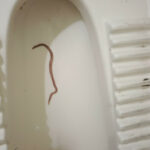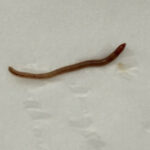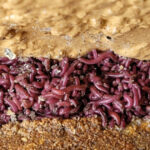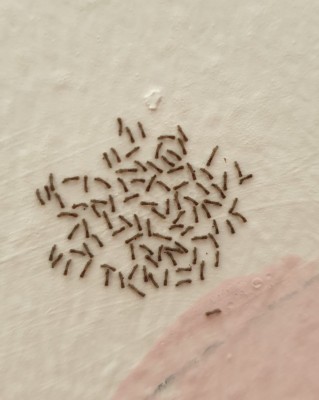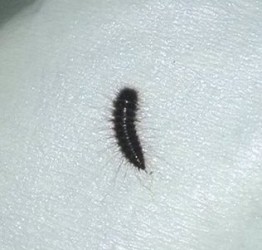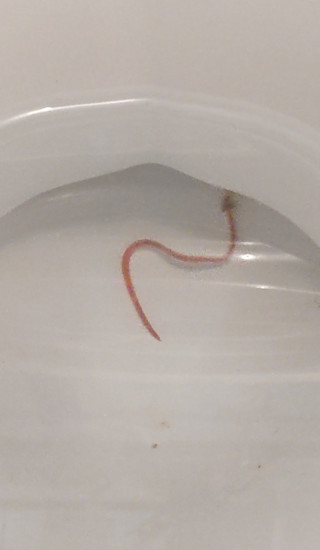
“We found this worm in the loo this morning”, writes this reader about the long, red worm pictured below. “We have a kitten, and sometimes flush his stool. I fear this may be yet another bloodworm/earth worm question, but we wanted to ask whether you thought it could’ve come from our kitten. We live in a top floor apartment on the 4th floor in the UK.” Just by looking at the worm, we think it is indeed a bloodworm. If we did not think it was a bloodworm, we would not be able to confirm or deny if we thought it came from the kitten, as only a vet would be qualified and legally able to do so. If our reader thinks that this worm is harming his kitten, or notices that worms are found in its stool, then we recommend taking the kitten to the vet.
The term ‘bloodworm’ does not actually refer to any specific species of worm. In fact, it is an umbrella term for all kinds of worm-like creatures that all share one characteristic: their blood red color, but moreso, the biological explanation behind this coloration. Bloodworms all produce an excess amount of hemoglobin, which is the protein in red blood cells that carries oxygen throughout our bodies to the various organs in them. Because of this excess production of hemoglobin, bloodworms take on the color that they do. Now, why do they produce more hemoglobin? Well, it is likely a product of evolution, as this process allows them to sustain for longer periods of time in low oxygen conditions, such as underwater, without being marine worms. That said, some species of bloodworms, like the red midge fly larva, is an aquatic species.
There are a few reasons why a bloodworm might show up in a toilet. The first reason is that there is a leak somewhere in the plumbing. Signs of a leak include: foul-smelling or -tasting water, inconsistencies in water temperature or pressure, and discolored water. If our reader thinks he may be experiencing a leak, then he should contact a professional to deal with the issue. The second reason is that the toilet is not cleaned or used often, which results in stagnant water. This, in turn, results in the formation of organic growths, like algae, that detritivorous bloodworms like to munch on (eg: tubificid worms). To prevent worms like these from coming up one’s toilet, it is important to not only keep the outside of the toilet clean, but the inside well. And that goes for all of the drains in one’s home.
In conclusion, we think it is likely that the worm our reader found in the toilet is a bloodworm, but if he thinks it is harming his kitten, then he should by all means disregard that identification and instead take it to the vet. We hope this helps, and we wish our reader the very best.
All About Worms is always free, always reader-supported. Your tips via CashApp, Venmo, or Paypal are appreciated! Receipts will come from ISIPP Publishing.
You might also find these guys interesting!




